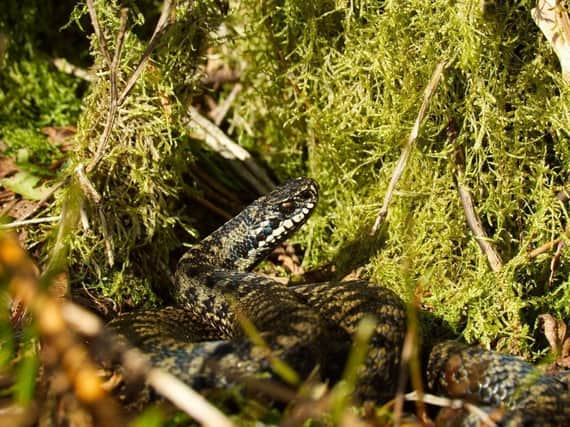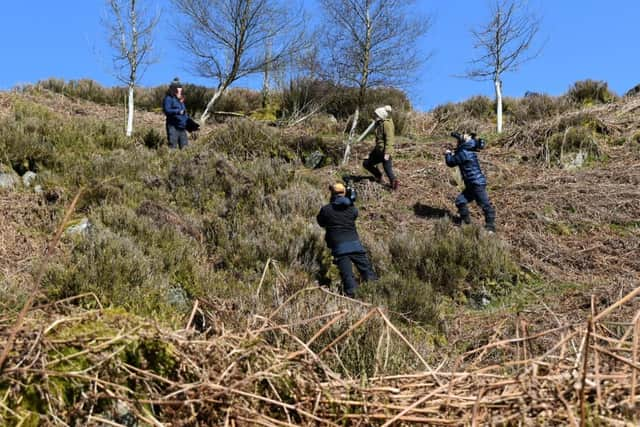Visitors to Nidderdale warned to look out for adders to help in conservation efforts


The team at Nidderdale AONB has launched Adder Watch, after the plight of adders was profiled on BBC Countryfile on Sunday April 25 with presenter Helen Skelton, who worked with the team on researching and filming the show.
AONBs are designated in recognition of their national importance and to ensure that their character and qualities are protected for all to enjoy.
Advertisement
Hide AdAdvertisement
Hide AdHelen Skelton tweeted: “Celebrating Nidderdale on BBC Countryfile. We swam in icy waters, got blown over by crazy winds, found some adders and learned about ancient woodlands.”


Adders are the UK’s only venomous snake, and are disappearing from the UK countryside. A recent study by Make the Adder Count indicates that 90% of surveyed sites have declining adder populations.
The BBC focussed on the adder surveys currently taking place across Nidderdale AONB. Kelly Harmar, Biodiversity Officer at Nidderdale AONB, advised the BBC on locations to film the notoriously shy adders, and offered expertise on the species.
Kelly said: “It was fantastic to raise awareness of Nidderdale AONB to a national audience and our work to conserve and protect adders and their habitats. On the back of that, we have launched Adder Watch to try and engage more people in our work to help protect the future of this extraordinary species.”
Advertisement
Hide AdAdvertisement
Hide AdAdder Watch is asking people out and about in Nidderdale AONB to report any sightings on an online form on their website, or email their sightings to [email protected]
Kelly added: “It’s vital that people don’t actively go looking for adders, we are just asking people that if they do spot one when they are out and about to please let us know and not to share the location of any sightings on social media.
“It’s really important that any adders aren’t disturbed by people going to look for them.”
Adders like to live in moorland, heathland, open woodland glades, near old stone walls and on rocky slopes.
Advertisement
Hide AdAdvertisement
Hide AdKelly said: “Adders are an excellent indicator of a healthy environment. If they are in decline, it suggests that other species who share the same habitat may also be in trouble.
“The more we know about where they are and their numbers in the AONB, the more we can do to help safeguard the future of this vulnerable species.”
Adders hibernate over winter, often in groups. If their hibernation sites are destroyed it can have a devastating effect of the ability of the adders to survive.
When they come out of hibernation, they sunbathe to build up strength and flatten themselves to catch as many rays as possible. Adders can be seen typically between March and October.
Advertisement
Hide AdAdvertisement
Hide AdMales are often grey with black zigzags on their backs. Females are usually brown with dark brown zigzags on their backs. They typically range from 60 to 80cm in length.
Kelly added: “It’s really important not to disturb one if you see one sunning itself. If you see an adder, leave it alone and keep children and dogs at a safe distance.
“Adders will only bite as a last line of defence. They would much prefer to slip away unnoticed or be left alone. If bitten, seek medical help immediately.”
People are also being asked to report any sightings of slow-worms or common lizards in Nidderdale AONB.
Advertisement
Hide AdAdvertisement
Hide AdNidderdale AONB is an area of 233 square miles located on the eastern flanks of the Yorkshire Pennines stretching from the high moorland of Great Whernside south and east towards the edge of the Vale of York.